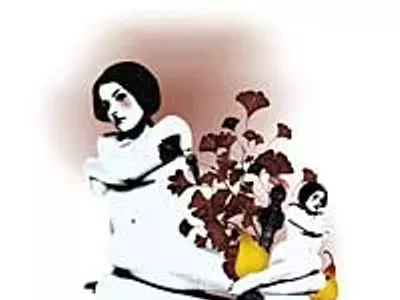With Townes Van Zandt as the subject for her first documentary, Margaret Brown faces the challenge of telling a good story as well as reaching past the musician's cult of adoring fans to entice the ignorant masses. Surprisingly, her modest but masterful reflection on Van Zandt's life and music delivers on both accounts.
Revered by members of the "Outlaw Country" community (Steve Earle, Joe Ely, Kris Kristofferson, Willie Nelson) as one the greatest songwriters who ever lived, Van Zandt created haunting tunes that seamlessly wove together country, blues and folk. His songs had a simple and solemn beauty, often focusing on hard living, lost souls, drugs and alcohol. Yet Van Zandt managed to put a life-affirming spin on his work, delivering insightful moments of truth and poetry. Some called him the Vincent van Gogh of songwriting, and Earle went so far as to offer to "stand on Bob Dylan's coffee table" and proclaim Van Zandt the world's best tunesmith.
A Texan by birth, Van Zandt rejected the wealth of his oil-rich family early on. Depression and drug addiction landed him in a psychiatric ward where insulin shock treatments erased most of his childhood memories. His early days as a musician were filled with substance abuse and near-death experiences — including a four-story dive off an apartment balcony and a glue-huffing overdose that convinced doctors he was dead. Film footage of him in the '70s, passing a can of beer, a bottle of bourbon and a rifle from hand to hand while relating his courtship with the Grim Reaper, seem poetically prescient.
Still, watching the taped interviews, home movies, audio conversations and concert footage, it's clear the songwriter had a genius' dedication to his craft. Restless and self-deprecating, Van Zandt constantly obsessed over writing "good songs" while leaving his personal relationships to fester. As a newlywed, his first wife thought the endless hours he spent practicing in their bedroom closet would yield romantic love songs, not the melancholic "Waitin' Round to Die." One of the most arresting moments in the documentary features Van Zandt's impromptu performance of the song in a friend's kitchen, causing an elderly black cowboy to break down in tears.
Despite his obvious talents, fame and fortune eluded Van Zandt for most of his career. He never had anything close to a hit and often struggled to keep his records in print. It wasn't until Willie Nelson and Merle Haggard's mid-'80s cover of "Pancho and Lefty" that the songwriter achieved financial success.
Much like cult figure Gram Parsons, Van Zandt ended up a casualty of his own excesses, dying in 1997 at age 53. Given his numerous flirtations with death it's a surprise he lasted as long as he did. Unlike Parsons or Nick Drake, however, his music hasn't seen much in the way of popular resurgence. Perhaps it's Van Zandt's defiantly muted style that resists the interest of hipsters. Nevertheless, he remains a "songwriter's songwriter," covered by everyone from Emmylou Harris and Lyle Lovett to The Cowboy Junkies and The Tindersticks.
Van Zandt also earned the everlasting friendship of country legend Guy Clark — who starts the film with a shot of tequila in tribute to his fallen comrade, and finishes with an appearance at his star-studded funeral. There he jokes that he had "booked this gig 37 years ago."
Brown's approach to Van Zandt's life is much like the man's music: laconic, artful and subtly moving. She avoids the glorifying love letters most music documentarians fall prey to and presents an honest and well-rounded study of the man's talent and the sometimes-heartbreaking consequences of his life choices.
Showing at the Detroit Film Theatre (inside the DIA, 5200 Woodward Ave., Detroit), at 7:30 p.m., Monday, Feb. 20. Call 313-833-3237.
Jeff Meyers writes about film for Metro Times. Send comments to [email protected].






